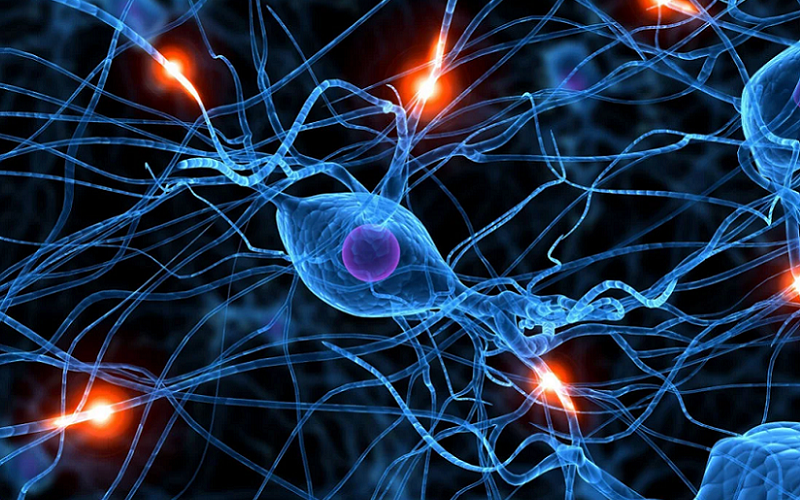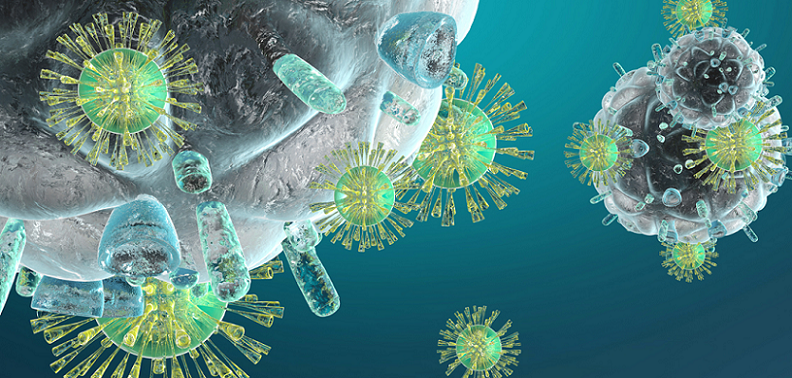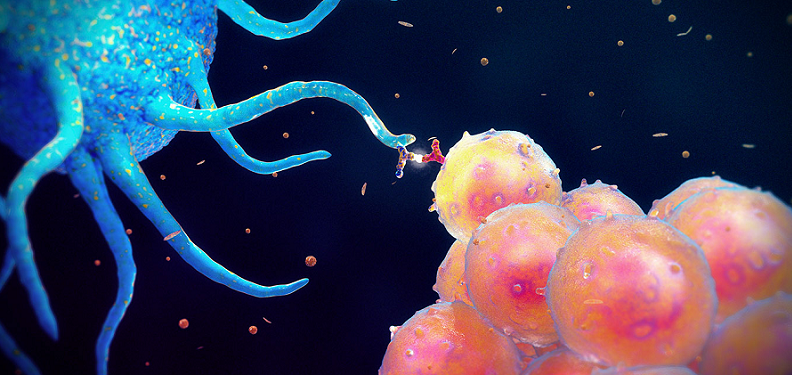
In the intricate labyrinth of the human body, our neurons—those electric messengers of the brain—have long captivated our attention, enabling us to think, feel, and act. On another front, immune cells valiantly guard our health, warding off invaders and ensuring our wellbeing. But what if these two seemingly disparate entities were intertwined in a way we’ve only just begun to understand? Enter neuropods, the hidden bridges connecting our nervous and immune systems.
Contents
- Introduction to Neurons and Immune Cells
- Background on Neurons and Neurobiology
- Immune Cells at a Glance
- Discovering the Connection: Neuropods
- Implications of the Neuron-Immune Cell Connection
- References
Introduction to Neurons and Immune Cells
In the intricate tapestry of human biology, where every thread has its purpose and every connection its significance, two systems have long stood apart in our understanding: the neuronal and the immune. While the former gives us consciousness, emotions, and memories, the latter defends our very existence from countless external threats. But science, ever evolving and challenging our perceptions, now unveils a connection — neuropods — that bridges these two systems in profound ways.
Brief Overview of Neurons
Neurons, often hailed as the fundamental units of the brain, are the architects of our thoughts, actions, and emotions. They’re specialized cells, crafted meticulously for rapid communication. Through a series of electrical and chemical signals, neurons chat across vast networks, ensuring that we sense our environment, respond to stimuli, and even dream.
Mention of Immune Cells and Their Primary Functions
On the other side of this biological narrative are immune cells. These vigilant sentinels are tasked with a mission of paramount importance: to protect the body. From detecting and neutralizing harmful invaders like viruses and bacteria to repairing injured tissues, immune cells maintain our body’s equilibrium, ensuring that we remain hale and hearty.
The Unexpected Link Between the Two
At first glance, neurons and immune cells seem to operate in parallel universes, with distinct roles and responsibilities. Yet, recent scientific explorations have revealed a mysterious bridge—neuropods—that links these two domains.

Background on Neurons and Neurobiology
Diving deeper into the realm of the brain, we find ourselves amidst a bustling city of neurons. These unique cells, with their delicate tendrils and intricate networks, are the reason behind every thought, every movement, and every emotion we experience.
What are Neurons?
Neurons are the fundamental building blocks of the nervous system. Distinct from other cells in their structure and function, they possess an incredible ability to transmit information rapidly across vast distances.
Structure and Function
At its core, a neuron consists of a cell body or soma, dendrites, and an axon. The dendrites, like the receptive branches of a tree, gather signals from other neurons. These signals then travel down the axon—a long, tail-like projection—ultimately reaching the synapses. Here, at these junctions, the neuron communicates with other cells, transmitting its message through chemical neurotransmitters. It’s this synchronized dance of electrical and chemical signals that allows for everything from the twitch of a finger to the remembrance of a childhood memory [1].
How Neurons Communicate
Neuronal communication is a marvel of nature. When a neuron receives a signal strong enough to be activated, it fires an electrical impulse called an action potential. This electrical wave races down the neuron’s axon until it reaches the synaptic terminals. Once there, it triggers the release of neurotransmitters, chemical messengers that cross the synaptic cleft to bind with receptors on a neighboring neuron’s dendrite. Depending on the type of neurotransmitter and receptor involved, the signal can either excite the receiving neuron, pushing it closer to firing its own action potential, or inhibit it, making it less likely to fire.
Importance of Neuronal Health and Connectivity
While it’s mesmerizing to think of neurons as individual entities, their true magic lies in their connections. The intricate webs they weave form the basis of our brain’s immense computational power and also underscore the significance of maintaining their health and vitality.
Role in Cognitive Function
Neuronal networks underlie our cognitive functions. When these networks function seamlessly, we experience clarity of thought, the ability to learn, and the capacity to recall memories. From solving a mathematical problem to recognizing a familiar face in a crowd, it’s the synchronized activity of these neuronal circuits that makes it all possible.
Implications in Neurological Disorders
However, when neurons or their networks are compromised, it can lead to a range of neurological disorders. Conditions like Alzheimer’s, Parkinson’s, and multiple sclerosis can be traced back to disruptions in neuronal health and connectivity. Understanding these disruptions and their origins is pivotal, not only for unraveling the mysteries of the brain but also for developing potential treatments and interventions.

Immune Cells at a Glance
Moving from the electrical web of neurons, we journey into the dynamic realm of the immune system. This intricate defense mechanism, teeming with various types of cells, is our body’s primary line of defense against external threats. But beyond this protective role, immune cells play a part in a myriad of physiological processes.
Understanding the Immune System
At its essence, the immune system is a complex network of cells, tissues, and organs, harmoniously working together to guard our health. It is our silent, vigilant protector, always on the lookout for potential threats [2].
Innate and Adaptive Immunity
Broadly, our immune response can be classified into two categories: innate and adaptive. The innate immune system is our first line of defense, responding immediately to foreign invaders. Comprising cells like macrophages and neutrophils, it offers a generalized response without specific recognition.
On the other hand, the adaptive immune system is more specialized. It remembers past invaders, thanks to cells like T-cells and B-cells, and mounts a stronger and quicker response during subsequent encounters. This ability to “remember” is why vaccinations work, priming our adaptive system to recognize and combat specific pathogens.
Key Cells: T-Cells, B-Cells, Macrophages, etc.
- T-Cells: These are a type of white blood cell that play a pivotal role in cell-mediated immunity. They can directly attack infected cells or aid other immune cells in their functions.
- B-Cells: Responsible for producing antibodies, B-cells play a crucial role in humoral immunity. When activated, they differentiate into plasma cells, releasing antibodies that neutralize pathogens.
- Macrophages: These cellular giants engulf and digest foreign invaders, effectively “eating” them. They also play a role in alerting other immune cells of potential threats.
Immune Cells Beyond Fighting Pathogens
While defense against foreign invaders is undoubtedly a vital aspect of the immune system’s role, these cells also have responsibilities that extend beyond mere protection [3].
Repair and Maintenance
Our immune cells aren’t just warriors; they’re also healers. They assist in repairing tissues damaged by injury or inflammation. For instance, macrophages, aside from their pathogen-eating capabilities, also aid in wound healing by removing dead cells and facilitating tissue regeneration.
Role in Inflammation and Homeostasis
Inflammation, though often perceived negatively, is a crucial part of our immune response. It’s the body’s way of signaling that something is amiss. Immune cells like mast cells release inflammatory mediators that increase blood flow to the affected area, allowing more immune cells to reach and address the issue.
However, chronic inflammation can be harmful and is implicated in several diseases. Immune cells, in their quest for homeostasis, must strike a delicate balance between mounting an effective response and preventing prolonged inflammation.
Discovering the Connection: Neuropods
Amidst the vast panorama of biological discovery, every so often, we stumble upon connections that seem to rewrite the textbooks. The discovery of neuropods—a previously uncharted bridge between neurons and immune cells—sits prominently among such revelations.
What are Neuropods?
The term “neuropods” may sound like something out of a science fiction tale, but their existence and importance in our physiology is very real and still unfolding before the scientific community.
Definition and Structure
Neuropods are specialized structures formed at the interface between neurons and certain immune cells. These intricate connections allow for direct communication between the two cell types. Morphologically, they resemble neuronal synapses, but instead of connecting two neurons, one end is a dendritic spine of a neuron, and the other end is often an immune cell, like a T-cell.
How They Were Discovered
The discovery of neuropods can be credited to advances in imaging techniques and interdisciplinary collaboration between neurobiologists and immunologists. High-resolution microscopy revealed these unique interfaces in brain tissue samples. Initial reactions ranged from disbelief to excitement, as the existence of such structures hinted at previously unknown levels of interaction between the nervous and immune systems [4].
Role of Neuropods in Neuron-Immune Cell Communication
While their mere existence was surprising enough, the functional implications of neuropods are even more profound, suggesting a deeply integrated system where immune cells can directly influence neuronal activity and vice versa.
Immune System Surveillance
One of the primary roles of neuropods seems to be surveillance. They allow immune cells to “check in” on neuronal health and activity. For instance, T-cells can gauge the health status of a neuron through these connections, determining if the neuron is under stress or infected by a pathogen. This intimate communication could be a game-changer in understanding how our body detects and responds to neural threats.
Neuronal Support and Protection
Conversely, neurons can also send signals to immune cells through neuropods. If a neuron senses a threat or requires assistance, it can call upon nearby immune cells for help. This suggests a dynamic and reciprocal relationship where both parties can solicit assistance, enhancing the overall resilience and adaptability of the brain.
Implications of the Neuron-Immune Cell Connection
With the revelation of neuropods, we are on the precipice of an entirely new frontier in biomedical research. The connection between neurons and immune cells, once thought to be tenuous or even nonexistent, is proving to be intricate and deeply consequential. This profound interconnectedness has widespread ramifications, reshaping how we view brain health, immune response, and potential therapeutic interventions.
Brain Health and Disease Mechanisms
The discovery of neuropods opens a Pandora’s box of possibilities in understanding the intricacies of brain health and the mechanisms behind various neurological diseases [5].
Rethinking Neuroinflammatory Diseases
Neuroinflammatory diseases, such as multiple sclerosis and Alzheimer’s, involve immune responses within the brain. With the neuron-immune cell interface now in focus, we can explore how neuropods play a role in these conditions. Perhaps immune cells are communicating with neurons more directly than we previously realized, influencing disease progression.
Potential Role in Neuroplasticity
Neuroplasticity, the brain’s ability to reorganize and adapt, could also be influenced by these neuron-immune cell interactions. Immune cells, through neuropods, might have a say in the formation and removal of synapses, thereby playing a role in learning and memory processes.
Immunomodulation and Brain Activity
The immune system’s influence isn’t just passive; it could actively modulate brain function and behavior.
Immune Response Influencing Cognition and Mood
Growing evidence suggests that our immune response can influence cognitive functions and mood. For instance, when we’re sick, the associated cognitive fatigue and mood changes might be a direct result of immune-neuronal communication through neuropods.
Neuropods in Stress and Resilience
The body’s stress response involves both the brain and the immune system. Neuropods could be key players in this intricate dance, helping explain why chronic stress not only affects our mental well-being but also makes us more susceptible to illness.
Therapeutic Potential and Future Research
The understanding of neuropods and the broader neuron-immune cell connection is not merely academic—it holds significant potential for therapeutic applications.
Targeted Treatments for Neurological Disorders
By targeting neuropods, we could potentially modulate immune responses in the brain, paving the way for novel treatments for neuroinflammatory conditions and neurodegenerative diseases.
Boosting Brain Health Through Immune System Optimization
It’s conceivable that by optimizing our immune health, we might indirectly support brain health. Future research might focus on strategies to bolster the immune system, leading to improved cognitive functions and resilience against neurological diseases.
References
[1] Neuropod Cells: Emerging Biology of the Gut-Brain Sensory Transduction
[2] Neuropods
[3] Neuropod cells — sensing a sweet spot in the gut
[4] A gut-brain neural circuit for nutrient sensory transduction
[5] Intestinal neuropod cell GUCY2C regulates visceral pain

